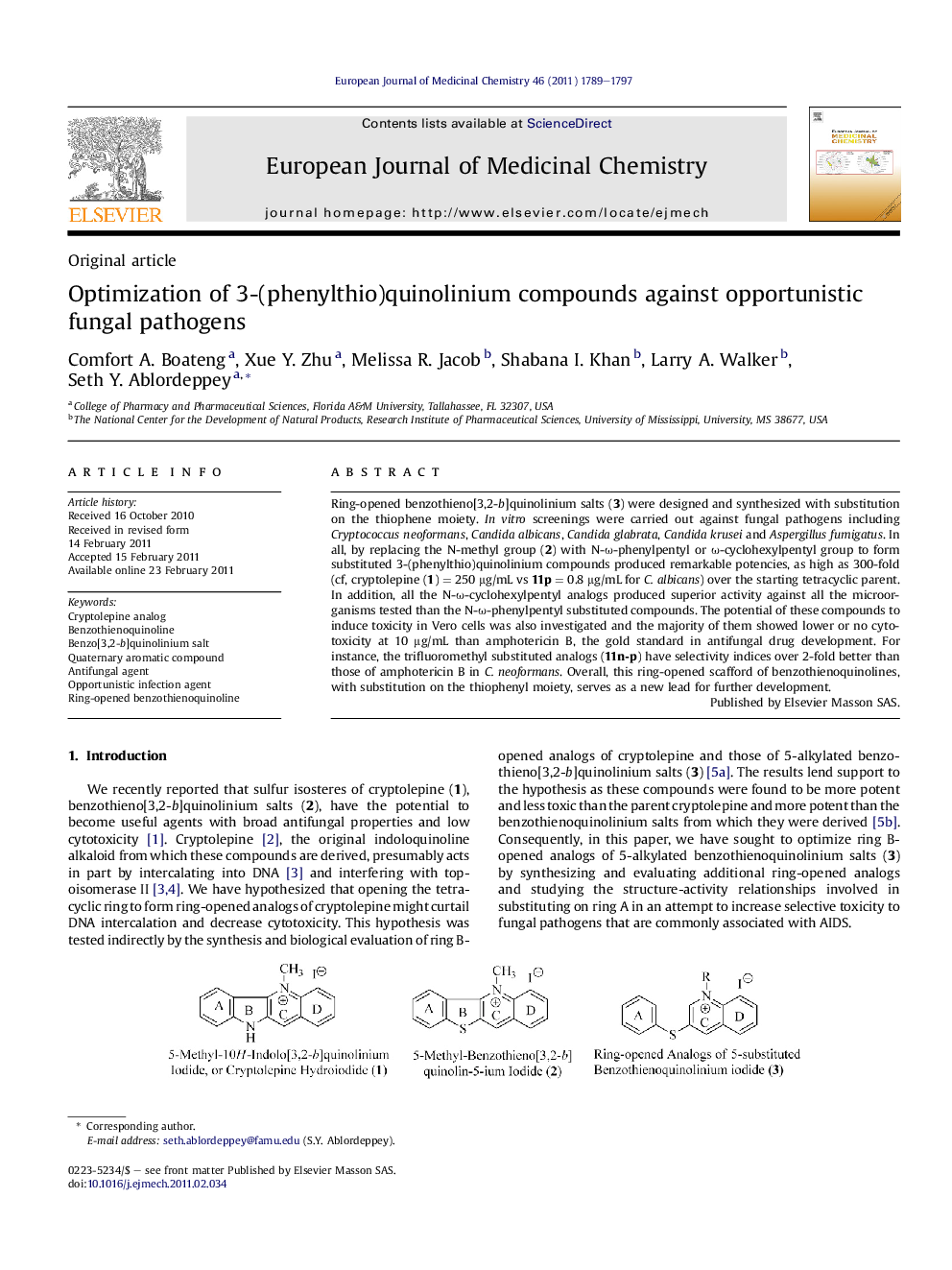| Article ID | Journal | Published Year | Pages | File Type |
|---|---|---|---|---|
| 1397523 | European Journal of Medicinal Chemistry | 2011 | 9 Pages |
Ring-opened benzothieno[3,2-b]quinolinium salts (3) were designed and synthesized with substitution on the thiophene moiety. In vitro screenings were carried out against fungal pathogens including Cryptococcus neoformans, Candida albicans, Candida glabrata, Candida krusei and Aspergillus fumigatus. In all, by replacing the N-methyl group (2) with N-ω-phenylpentyl or ω-cyclohexylpentyl group to form substituted 3-(phenylthio)quinolinium compounds produced remarkable potencies, as high as 300-fold (cf, cryptolepine (1) = 250 μg/mL vs 11p = 0.8 μg/mL for C. albicans) over the starting tetracyclic parent. In addition, all the N-ω-cyclohexylpentyl analogs produced superior activity against all the microorganisms tested than the N-ω-phenylpentyl substituted compounds. The potential of these compounds to induce toxicity in Vero cells was also investigated and the majority of them showed lower or no cytotoxicity at 10 μg/mL than amphotericin B, the gold standard in antifungal drug development. For instance, the trifluoromethyl substituted analogs (11n-p) have selectivity indices over 2-fold better than those of amphotericin B in C. neoformans. Overall, this ring-opened scafford of benzothienoquinolines, with substitution on the thiophenyl moiety, serves as a new lead for further development.
Graphical abstractFigure optionsDownload full-size imageDownload as PowerPoint slideHighlights► Ring-opened analogs of Benzothienoquinolinium salts have been optimized. ► Several synthetic analogs show potency over 300-fold the original natural product. ► Toxicity has also been attenuated several fold over the parent compounds. ► Overall, the optimized compounds are fungicidal in contrast to the parent compounds which are only fungistatic.
